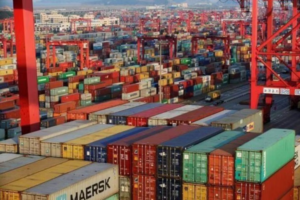Raj Dhawan and Sandeep Prabhakar explore how live animal logistics and digital transformation are reshaping air cargo, balancing sensitivity, compliance, and speed in a world of evolving trade and tech expectations.
The sensitivity of live cargo

“Live cargo isn’t freight; it’s life in transit”
Transporting live animals by air is not just a logistical task; it’s a responsibility. Raj Dhawan, Director, R. B. Ramnath Lambah & Sons, calls it “one of the most challenging tasks requiring precision, quick decision-making, and compliance with regulations of multiple countries.” The complexity begins with securing timely approvals from multiple authorities, each interpreting IATA’s Live Animal Regulations (LAR) differently. “This often leads to delays or even rejections during acceptance,” he explains.
Beyond paperwork, the human factor matters. “Many times, on-ground staff fail to understand the sensitivity of live cargo, which is not merely freight but living beings requiring minimal stress and quick turnaround,” Dhawan emphasises. The challenge is not just operational; it’s ethical.
Planning for welfare and compliance
Ensuring safety and welfare during transit starts long before take-off. “Every shipment must follow the IATA LAR framework,” Dhawan says, detailing container specifications, feeding schedules, documentation, and SOPs tailored to each species and country. Real-time coordination between shipper, airline, terminal operator, and transit airport authorities is essential to avoid any deviation from welfare protocols.
“We ensure pre-clearances and visual health checks before customs clearance,” he adds. From feeding and walking pets to using species-compliant crates, every detail matters. It’s a choreography of care, where timing and empathy go hand in hand
Trade shifts and the ripple effect
While recent U.S. tariff increases haven’t directly impacted freight rates for live animal logistics, Dhawan notes a subtler shift. “The broader economic ripple effect is visible,” he says. A USD 100,000 fee on new H1B1 visas has led many professionals to postpone or cancel relocation plans. “This reduction in workforce mobility has indirectly reduced the movement of pets and live animal consignments to the U.S., leading to a dip in shipment volumes.” It’s a reminder that air cargo is deeply intertwined with global human movement, and even policy changes far from the tarmac can reshape the cargo landscape
Breaking down data silos

“Real-time data turns cargo chaos into clarity”
On the digital frontier, Sandeep Prabhakar, Business Development Executive, WebCargo by Freightos, sees technology transforming air cargo operations. “API integration is enabling real-time data exchange between airlines, handlers, and forwarders,” he explains. This shift eliminates fragmentation, cuts paper-based operations by 60 percent, and reduces communication errors by over 90 percent.
AI is also driving smarter decisions. “AI powers demand forecasting, dynamic pricing, and route optimisation,” Prabhakar says. Airlines can now plan capacity with precision while maximising revenue.
Visibility, compliance, and predictive intelligence
Technology is also improving compliance and reducing delays. “AI analyses real-time flight data, weather patterns, and operational metrics to forecast delays,” Prabhakar shares. IoT sensors provide continuous tracking of location, temperature, and handling conditions, enabling proactive exception management.
Blockchain adds another layer of trust. “Blockchain creates immutable records and automates customs clearance through smart contracts,” he explains. This can reduce clearance times by up to 74 percent while improving compliance. WebCargo’s digital ecosystem connects freight forwarders to over 70 airlines, enabling instant pricing and 90 percent bookings without calls, accelerating workflows across the board.
Barriers to integration
Despite the promise, integration challenges remain. “Legacy systems lack flexibility and integration capabilities,” Prabhakar notes. Retrofitting modern APIs into decades-old infrastructure is complex and costly. Standardisation is also a hurdle. “Without generic data models and communication protocols, systems struggle with interoperability,” he says, though IATA’s ONE Record aims to unify standards by January 2026.
High implementation costs, cybersecurity risks, and organisational resistance further slow adoption. “Nearly 40 percent of challenges stem from inadequate digital skills,” Prabhakar adds. Successful transformation requires clear communication, phased rollouts, and proof of tangible benefits.
From live animal care to predictive cargo intelligence, the future of air logistics is being shaped by empathy and innovation. As regulations evolve and systems modernise, the industry’s ability to balance sensitivity with speed will define its next altitude.











